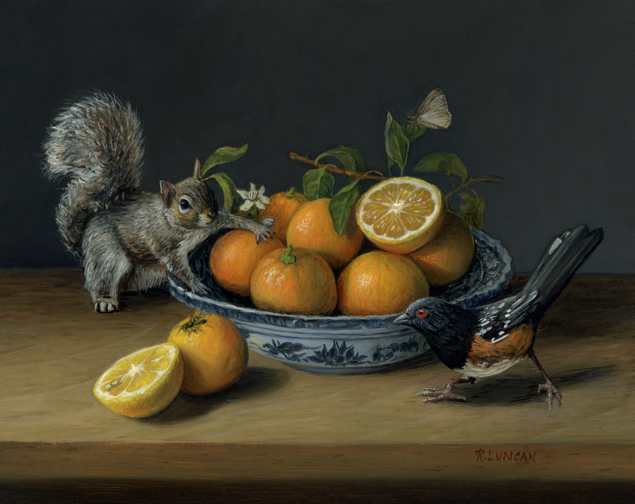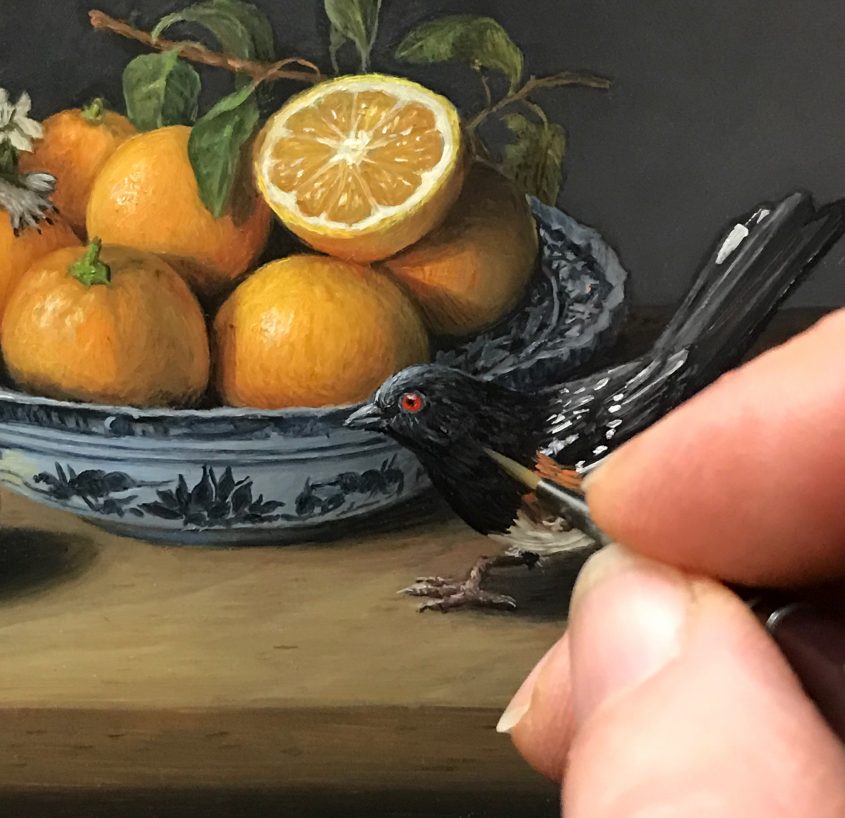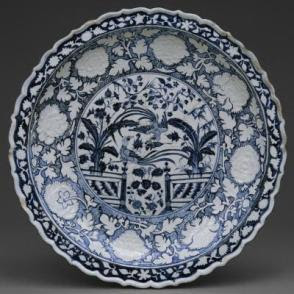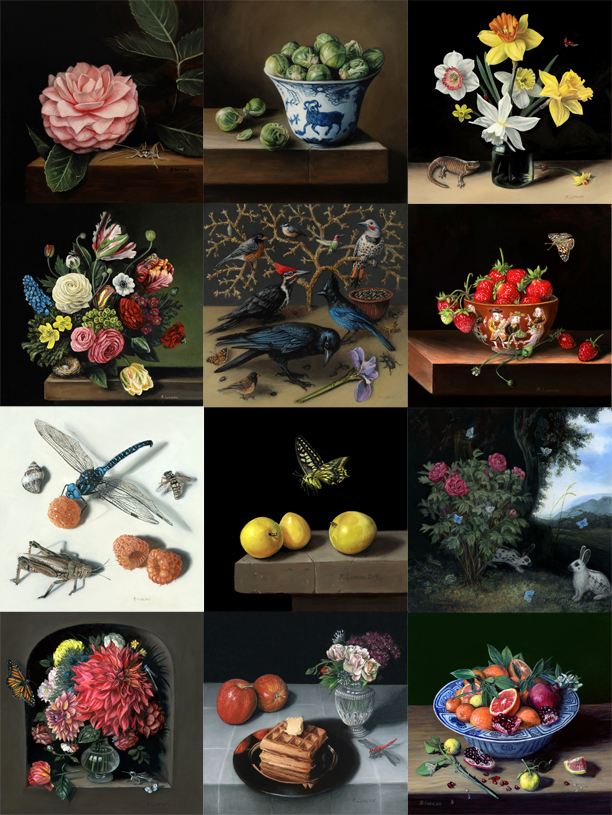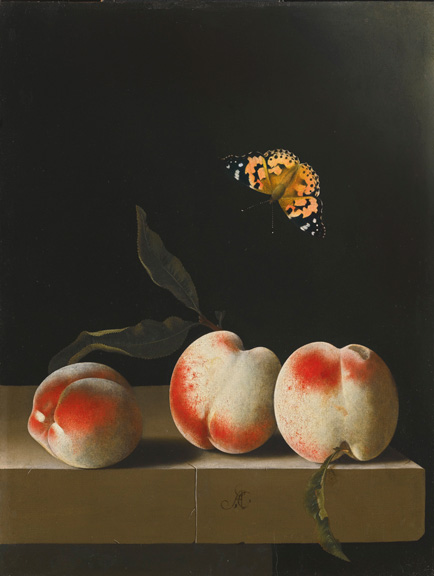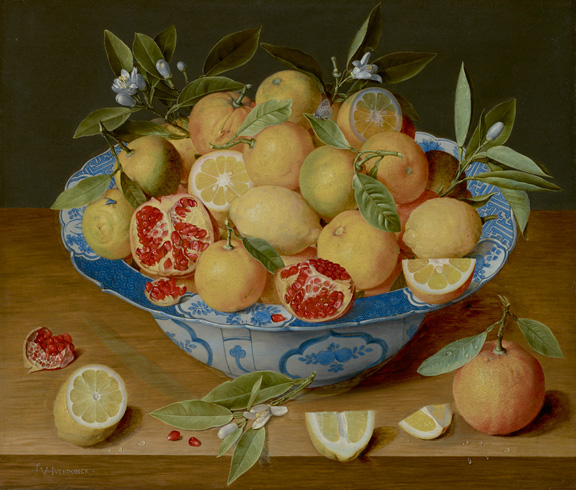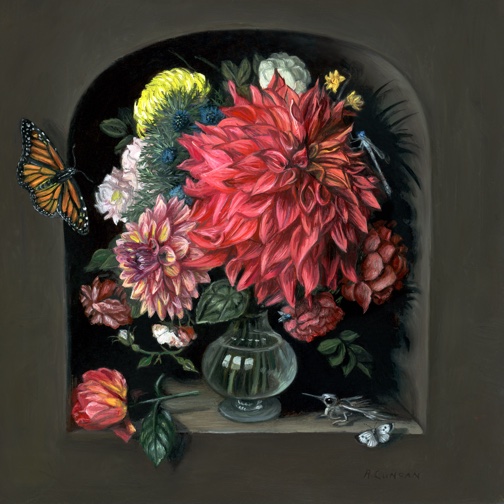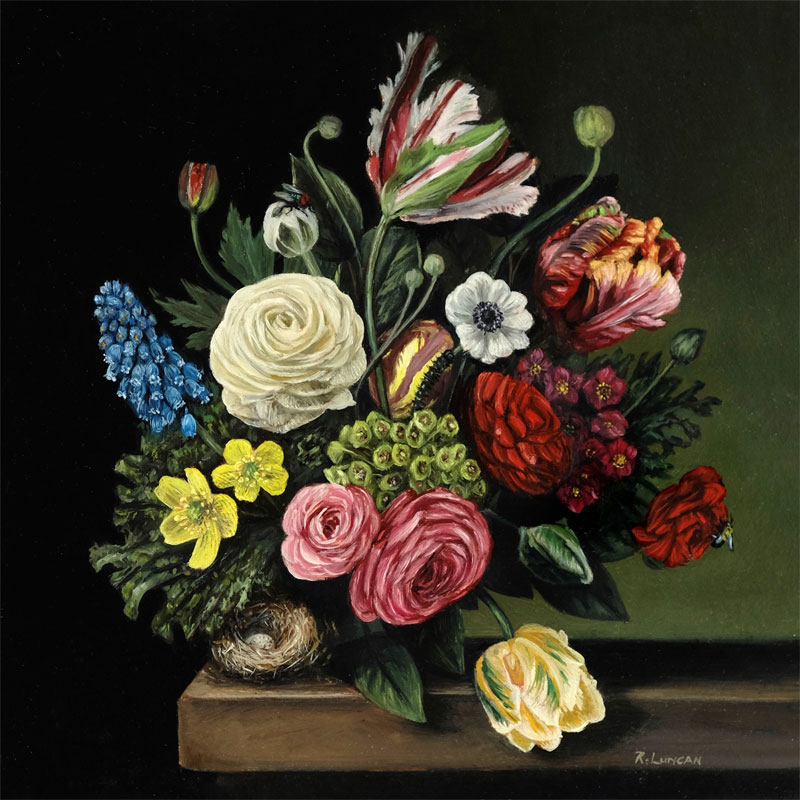I find a healthy dose of silly shenanigans is good for me. And after a long difficult year, we all deserve some. 🙂
I usually know what kind of mood I’m going for when I plan a painting, and I seek objects that work together to tell a story that fits. For my final painting of the series, I wanted to make something lighthearted and playful. This one makes me smile every time I look at it, and I hope you enjoy it!
Since I started making still life paintings last year, I am always on the lookout for subjects. Anything that catches my fancy is studied, posed, photographed, then added to my growing reference library. The parts of this painting fell into place by scrolling through those images and intuiting which pieces of this puzzle would fit together.
Meyer lemons are an annual treat for the exhibition crew at SAM. Each year the head Exhibit Designer, Paul Martinez, would visit his family in California and pick lemons from their abundant orchard. Last year I took dozens of photos of them, just in case I wanted to use them in a painting. The squirrel visited us during one of our lunch breaks on a park bench in Volunteer Park while reinstalling the Seattle Asian Art Museum last summer-another batch of “just in case” images. And the dish was too hard to pass up when I noticed it in the conservation studio – more photographs. As I collected each of those images, I had no idea what they would become together.
Because I’m using pieces from the Seattle Art Museum collection as my models, I can’t actually place fruit inside bowls or plates. Instead I use something of my own that’s a similar size, shape and color for my mock ups. That helps me get a good idea of the shadows and light sources. Then I merge everything together, first in my imagination, with sketches, and then digital compositions. It’s still pretty rough at this stage, but finally through the process of making the painting, the scene starts to come to life.
It’s been such a privilege have a “day job” that has put me into direct contact with so much beautiful art. The museum has been closed for almost all of 2020, and it feels so fitting that I’ve made this series of paintings as a tribute to its collection, and to my experiences with the people there who have become very dear to me.
This body of work is my “thank you” to all of the past artists that worked to perfect their craft and push the limits of their artistic pursuits, to all of the countless people that have cared for these objects for hundreds of years after they were created; and to those that continue to care for these objects, ensuring that they will be treasured and viewed by countless people to come. I found the passion museum workers have for the preservation of objects for all of us to enjoy is contagious. I hope I’ve been able to pass a little of it on to you.
DISH WITH PHOENIX AND FLOWER MOTIFS, Collection of the Seattle Art Museum
Chinese, early 14th century
Porcelain with underglaze cobalt-blue decoration , Diameter: 18 3/4 in. (47.6cm), Purchased in memory of Elizabeth M. Fuller with funds from the Elizabeth M. Fuller Memorial Fund and from the Edwin W. and Catherine M. Davis Foundation, St. Paul, Minnesota, 76.7
Provenance:Purchased for Seattle Art Museum with funds from the Elizabeth M. Fuller Memorial Fund and from the Edwin W. and Catherine M. Davis Foundation, St. Paul, Minnesota, January 6, 1976
Photo: Paul Macapia
From the Seattle Art Museum website:
“Brilliant cobalt pigment and a refined porcelain body are essential to the striking beauty of blue-and-white wares, which rose in Chinese ceramic production in the fourteenth century largely as a result of huge demand in the central and western Asian markets. This large dish manifests the taste for elaborate designs derived from Islamic art, and its massive size was intended to accommodate communal meals customary among Muslims.”
